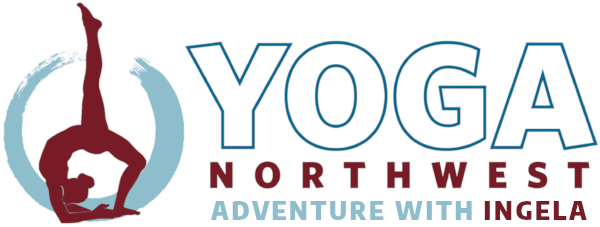The other day I drove through town and a sign said “Focus not on having, but on being.” This is a challenge in the consumer age we are in. But Yoga, on the contrary, is a practice that cultivates the presence of being and true contentment. Let’s go back to see what Patanjali said 3,000 years ago about contentment: “Santosha brings supreme happiness.”
What is contentment? The dictionary says, “Happy enough with what one has or is; not desiring something more or different; satisfied.” This kind of contentment sounds more like complacency to me. For example, one may say: I’m just going to be happy with my tight hamstrings, I’ll just live with my tender back, or I’ll just stay in Dynamic I forever. Complacency leads to stagnation and lacks vitality, growth, and fulfillment. Personally, I prefer the words I once heard from a Tai chi master describing contentment. “Accept what you have, give what you have, enjoy what you have.”
As a foundation, we first accept what we have. We need to accept our own bodies and abilities which we’ve received from our parents and from our life experiences. We accept our own tight hamstrings, weak arms, round hips, and tender backs right now.
Vimela Thakar says in Glimpses of Raja Yoga, “Santosha is a sense of contentment which arises when you do not compare yourself with others.” But when we walk into a Yoga class we often start comparing ourselves to others. We compare the length of our hamstrings to our neighbor’s, our strength, our endurance, or body shape. We also compare ourselves with ourselves; how flexible, strong, or slim we used to be a year or 20 years ago. Vimela Thakar continues, “As long as there is comparison, there cannot be contentment.”
It’s actually kind of futile to compare ourselves with others, as we are all uniquely different, with unique bodies and abilities. What might be one person’s strength might be another’s weakness. In Yoga we are not striving for perfect poses, perfect bodies, or perfect beings. Instead in each Yoga posture we are exploring our own individual balance, healthy edge, and hidden potentials.
After accepting what we have, we give what we have. We give our hamstrings a chance daily to loosen up with our Yoga stretches. We daily practice our Yoga to awaken strength, flexibility, healing power, and inner wisdom. We practice daily to open the doors for transformation, growth, and fulfillment, to help us become the best that we can be.
After giving what we have, we enjoy what we have. Bernard Bouanchaud says in The Essence of Yoga, “Focusing on what others have—or don’t have for that matter—instead of nourishing gratitude, leads to everlasting discontent.” We need to nourish gratitude. We daily fill our hearts with gratitude for what we already have in our lives; for example, being grateful for having legs and freedom of movement, eyes to see the beauty of creation, and a heart that beats faithfully, giving us the gift of life.
A powerful exercise to do before going to sleep is to recall 5 different things that we are grateful for in our lives. This exercise changes the chemistry in our cells and makes our inner body smile. I once heard from a senior Yoga teacher that gratitude also strengthens the immune system. So Santosha brings us health as well as happiness, and Bernard Bouanchaud sums it all up: “Contentment means looking at every event with a smile. It helps to have a good sense of humor.”
Namaste.
